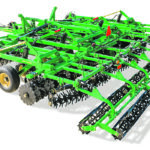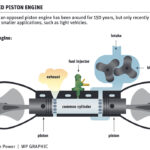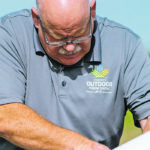Nitrogen makes up 78 percent of Earth’s atmosphere. Nitrogen is also one of the biggest cost factors in growing crops. So why not use the nitrogen in the air around us? It’s an exciting concept — extracting nitrogen from thin air and putting it to use growing a crop. As a side benefit, the nitrogen […] Read more
Stories by Ron Lyseng
Disease data merged for optimal spray trigger point
One key to top farm production is identifying disease risk areas and then figuring out the best time to address them with the application of an appropriate fungicide. That’s what the Xarvio Field Manager platform does for farmers, according to the company’s June 22 presentation at Ag in Motion 2021. By drawing data from a […] Read more
Corteva focuses on biologicals
In 2019, Corteva announced a commitment to biologicals, consisting of a three-part plan to reduce dependence on chemical solutions. The three legs of the plan are bio-stimulants, bio-control and pheromons. Bio-stimulants deal with nutrient efficiency, stress management and plant metabolism. The recently-announced Utrisha N is first product in this category. Bio-control products include herbicides, fungicides […] Read more

New Proline Gold: two action modes on sclerotinia
Product type:
Saskatchewan is the heart of pulse crop production, making the province a good home for sclerotinia. Large tracts of canola interspersed with pulse crops create a perfect environment for disease. In this setting, sclerotinia has plenty of places to hide, and then suddenly invade adjacent fields. Sclerotinia is one of the biggest economic enemies of […] Read more
Updating prairie nutrient uptake guidelines
The Canadian Fertilizer Institute’s Crop Nutrient Uptake and Removal Guideline was a valuable tool in its day, but old age has shown its hand
Agronomists have long known the Crop Nutrient Uptake and Removal Guidelines for Western Canada were obsolete. They didn’t recognize new crops, fertilizer technology, new varieties and new soil management practices. The guide is now being revised to bring it in line with the realities of today’s agronomic practices. It was developed in the 1990s by […] Read more
Top reasons to build a better bin system
Expanding farmers are growing their grain-handling systems, not only for larger volumes from increased acres, but also as a marketing tool allowing them to blend grain or sell later. Farmers sometimes build a new system to access three-phase power, natural gas and hardtop roads, according to Jayde Klassen with Wentworth Ag, the GSI dealer in […] Read more

Seven lips seal the deal on new bearing
SKF and Great Plains Manufacturing have collaborated to design new seals for tillage and seeding equipment. The Tillxtreme features an un-precedented seven sealing lips to reduce bearing contamination and downtime. Compared to the previous SKF three-lip seal, Tillxtreme provides 100 percent more contamination exclusion. The new bearing is maintenance free to eliminate daily relubrication, so […] Read more

Opposed pistons turn engines inside out with two pistons per cylinder
The opposed piston engine employs two pistons meeting TDC in the middle of a common cylinder for explosive power
Farm equipment will someday be powered by a truly revolutionary opposed piston (OP) diesel engine with fewer parts, developing more power than your current conventional diesel. The OP engine is also smaller, lighter, more fuel efficient, reduces normal diesel pollutants, brings nitrous oxide down to near zero and should cost less than a conventional diesel […] Read more
Opposed piston engine developed 140 years ago
There’s nothing new about opposed piston diesel engines. An industrial electrician I’ve known for 50 years worked on one of the giant engines at Churchill, Man., a few years ago. Pat Barry recalls the engine was in a 60-foot tugboat used in pushing and pulling grain ships around at the terminal. “This was a three-cylinder, […] Read more

Digging deep for soil solutions
Soil probes have been available to prairie producers, agronomists and meteorologists for more than two decades. However those early units could not always provide the expected depth of actionable information. For one thing, probes did not have the agronomic software to make sense of what they were reading. But that’s changing. As data collection becomes […] Read more




